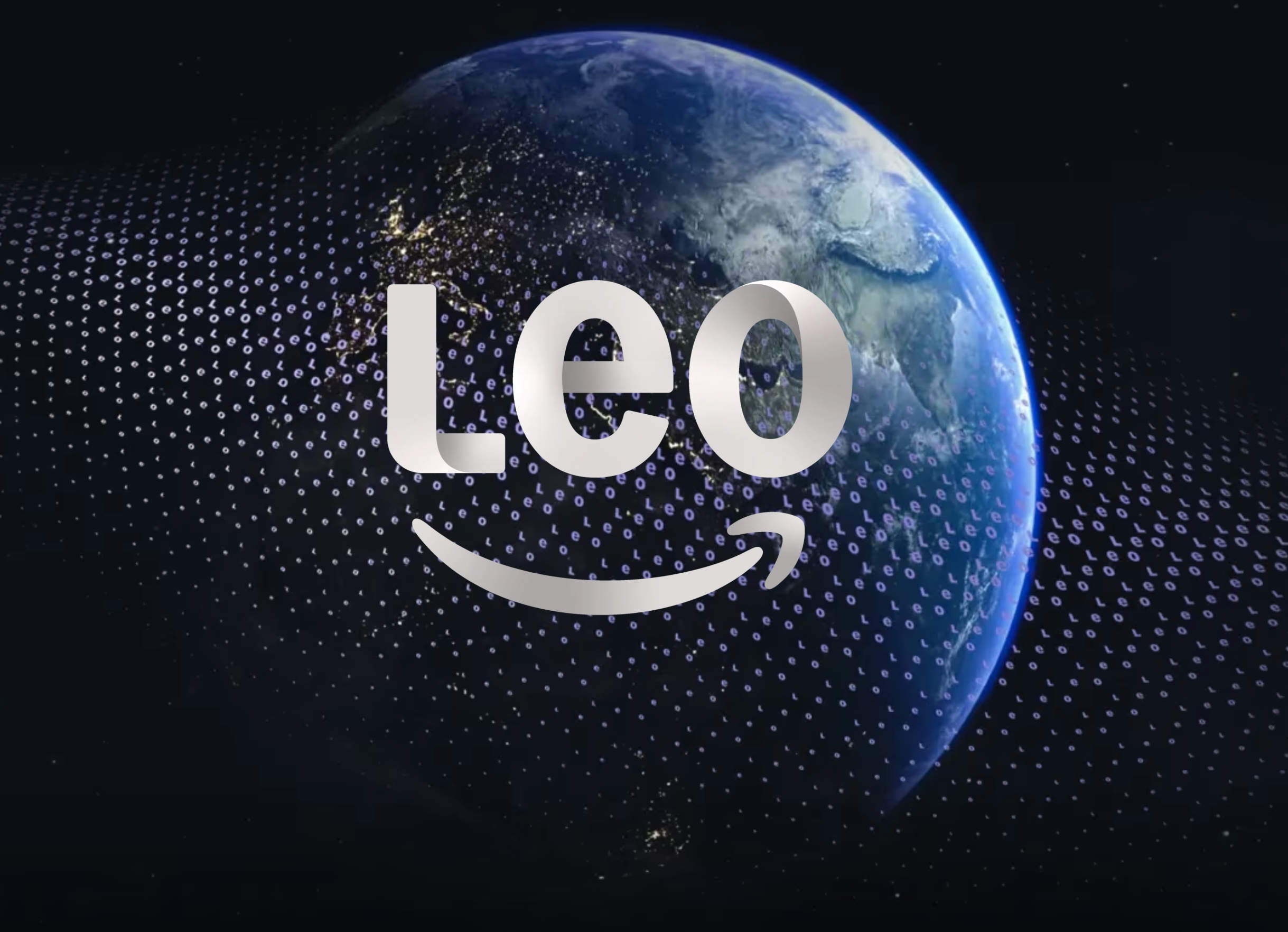
Amazon’s ambitious satellite internet initiative, previously known as Project Kuiper, has undergone a significant rebranding, now adopting the moniker "Leo." This change in nomenclature appears to coincide with a notable strategic pivot, shifting the program’s primary focus from its initial public commitment to providing affordable broadband for unserved or underserved global communities toward securing more lucrative commercial contracts. The subtle yet profound alteration in messaging suggests Amazon is positioning itself more squarely within the competitive landscape of enterprise-grade satellite communication.
The Evolution of Amazon’s Space Internet Vision
The genesis of Amazon’s satellite network dates back to 2019 when Project Kuiper was first publicly announced. At its inception, the project was framed as a monumental undertaking aimed at increasing global broadband access, particularly emphasizing a mission to deliver fast, affordable internet services to regions neglected by traditional internet service providers. This vision resonated with a broader societal push to bridge the global digital divide, a chasm exacerbated by geographical limitations and economic disparities that prevent billions worldwide from accessing reliable internet connectivity. Amazon’s initial communications, visible in archived web pages from late 2024, explicitly highlighted affordability as a "key principle," drawing parallels to the company’s success with low-cost consumer devices like the Echo Dot and Fire TV Stick. The intent was to leverage Amazon’s expertise in scale and cost-efficiency to make satellite internet accessible to a wide demographic.
The name "Project Kuiper" itself was always described as a temporary placeholder, a working title during the developmental phase. The new designation, "Leo," is an industry-standard abbreviation for "Low-Earth Orbit," the specific orbital plane where the constellation of thousands of Amazon’s satellites will operate. This technical, succinct name reflects a more mature, perhaps more business-oriented, identity for the venture.
From Kuiper to Leo: A Strategic Rebranding
The shift from Project Kuiper to Leo is more than a superficial name change; it represents a deeper strategic realignment within Amazon’s long-term objectives for its space-based internet service. Early public statements and frequently asked questions (FAQ) pages for Project Kuiper consistently underscored the company’s commitment to underserved populations. An archived version of the main FAQ page, for instance, prominently featured the mission to serve these communities, mentioning "affordability" multiple times and describing it as a core tenet. One particular Q&A section directly addressed the cost of service, stating, "Amazon has a longstanding commitment to low prices, and lots of experience building popular, low-cost devices like Echo Dot and Fire TV Stick. We’re applying a similar approach with Project Kuiper." This language painted a clear picture of a service designed to be accessible to the masses, potentially disrupting the existing satellite internet market with competitive pricing.
However, recent updates to the official Leo FAQ page and the program’s dedicated website reveal a distinct departure from this initial messaging. The explicit question and answer regarding cost have been removed entirely, and the word "affordability" is conspicuously absent from the updated content. The language at the top of the new FAQ page now describes Leo as "Amazon’s low Earth orbit satellite network, designed to provide fast, reliable internet to customers and communities beyond the reach of existing networks." While it acknowledges that poor connectivity creates "an economic disadvantage for people, businesses, and other organizations operating in unserved and underserved parts of the world," the emphasis on putting these communities "front and center in the customer pipeline" has diminished. Instead, the current Leo website prominently features capabilities such as "seamless video calls, stream 4K videos," and handling "your whole family’s internet needs," alongside highlighting its "flexible, scalable, enterprise-ready" nature. The mention of using Leo in "rural and remote locations" appears almost as an afterthought, lacking the previous sense of mission-driven urgency.
The Promise of Low-Earth Orbit Constellations
The broader context for Leo’s development is the burgeoning field of Low-Earth Orbit (LEO) satellite constellations, a new frontier in global connectivity. Unlike traditional geostationary (GEO) satellites, which orbit at much higher altitudes (approximately 22,236 miles or 35,786 km) and suffer from significant latency due to the signal travel time, LEO satellites orbit much closer to Earth (typically 100 to 1,200 miles or 160 to 2,000 km). This proximity dramatically reduces latency, making LEO internet suitable for activities like online gaming, video conferencing, and other real-time applications that require quick response times.
The race to dominate this space began in earnest with SpaceX’s Starlink, which has rapidly deployed thousands of satellites and commenced commercial service. Other players like OneWeb, Viasat, and HughesNet are also heavily invested in LEO or hybrid GEO/LEO solutions. Amazon’s entry into this arena, backed by a staggering $10 billion investment commitment, was always seen as a formidable challenge to existing and emerging competitors. The Federal Communications Commission (FCC) granted Amazon approval to deploy over 3,200 satellites for Project Kuiper, a testament to the scale of the company’s ambition. The first prototype satellites were launched earlier this year, marking a significant step from conceptualization to operational reality.
Shifting Priorities: Affordability Versus Enterprise
The analytical commentary surrounding this strategic shift points to several potential drivers. Deploying and maintaining a massive LEO satellite constellation is an incredibly capital-intensive endeavor. While the initial vision of serving underserved communities with affordable broadband is noble, the economics of such a model can be challenging. The cost of ground terminals, user equipment, and the operational expenses associated with managing a global network might make it difficult to sustain profitability solely on a low-margin consumer base in remote areas.
By prioritizing commercial and enterprise contracts, Amazon can secure higher average revenue per user (ARPU) and larger, more stable revenue streams. Deals with major players like Airbus for in-flight connectivity and JetBlue to provide free in-flight internet are prime examples of this new focus. These types of partnerships not only offer substantial financial benefits but also provide a clear, immediate market for the technology, helping to offset the enormous upfront investment. This approach is not unique; SpaceX’s Starlink, while initially focused on rural consumers, has increasingly expanded its offerings to enterprise, maritime, and aviation sectors, acknowledging the significant revenue potential in these markets.
The change in language also reflects a maturation of Amazon’s understanding of the LEO market. While the digital divide remains a critical global issue, the immediate path to profitability and return on investment for such an infrastructure project often lies with customers who have higher spending power and more complex connectivity needs. This includes businesses, government agencies, airlines, and maritime operators, all of whom require robust, reliable, and high-speed internet in locations where terrestrial options are limited or nonexistent.
Navigating the Competitive Landscape
The LEO satellite internet market is intensely competitive, with Starlink currently holding a dominant position. Amazon’s Leo will enter a landscape where established players are already expanding their services and securing key partnerships. This competitive pressure could also be a factor in Amazon’s strategic pivot. To differentiate itself and capture market share, focusing on high-value segments where the technology’s capabilities (low latency, high bandwidth) can command premium pricing might be a more viable path than a direct, price-driven confrontation in the consumer market.
For Amazon, a company known for its vast e-commerce empire and cloud computing dominance (AWS), Leo represents a significant expansion into a new, vertically integrated service. The ability to offer global connectivity could complement other Amazon services, such as AWS Ground Station for satellite data processing, and potentially enhance its logistics and supply chain operations. The long-term vision might extend beyond just internet provision, encompassing data services, IoT connectivity, and other applications that leverage a global, low-latency network.
Market Implications and Future Trajectory
The implications of this shift are multifaceted. For the market, it means an intensified battle for enterprise and mobility contracts in the LEO space. For consumers in underserved areas, it might signal a delay or even a reduction in the initial promise of truly affordable satellite internet from Amazon, although the company’s "New name, same mission" claim on X (accompanied by a video showing diverse users including those in remote settings) suggests it may still aim to serve these populations, albeit perhaps not as a primary, affordability-driven strategy. The core mission statement now emphasizes providing internet to "customers and communities beyond the reach of existing networks," which is broad enough to encompass both high-paying commercial clients and remote residential users, without specifically highlighting the affordability aspect for the latter.
Ultimately, the success of Leo will hinge on its ability to deliver reliable, high-performance connectivity at a competitive price point within its chosen market segments. The scale of Amazon’s investment and its track record in complex logistical operations suggest that Leo has the potential to become a significant player. However, the initial messaging shift highlights the inherent tension between ambitious social goals and the economic realities of deploying and operating global, cutting-edge infrastructure.
The Broader Context of Digital Inclusion
From a societal perspective, Amazon’s evolving strategy underscores the ongoing challenge of achieving universal digital inclusion. While technological advancements like LEO satellite constellations offer unprecedented opportunities to connect remote regions, the commercial models that underpin their deployment are critical. If major providers pivot towards high-value commercial clients, it raises questions about who will ultimately bear the responsibility—and cost—of bringing truly affordable internet to the world’s most economically disadvantaged and geographically isolated populations. Governments, non-profit organizations, and innovative public-private partnerships may become even more crucial in ensuring that the promise of global connectivity extends to everyone, regardless of their ability to pay premium prices. The rebranding of Project Kuiper to Leo is not just a change of identity; it is a clear indicator of Amazon’s refined strategy in the high-stakes game of global satellite internet.




